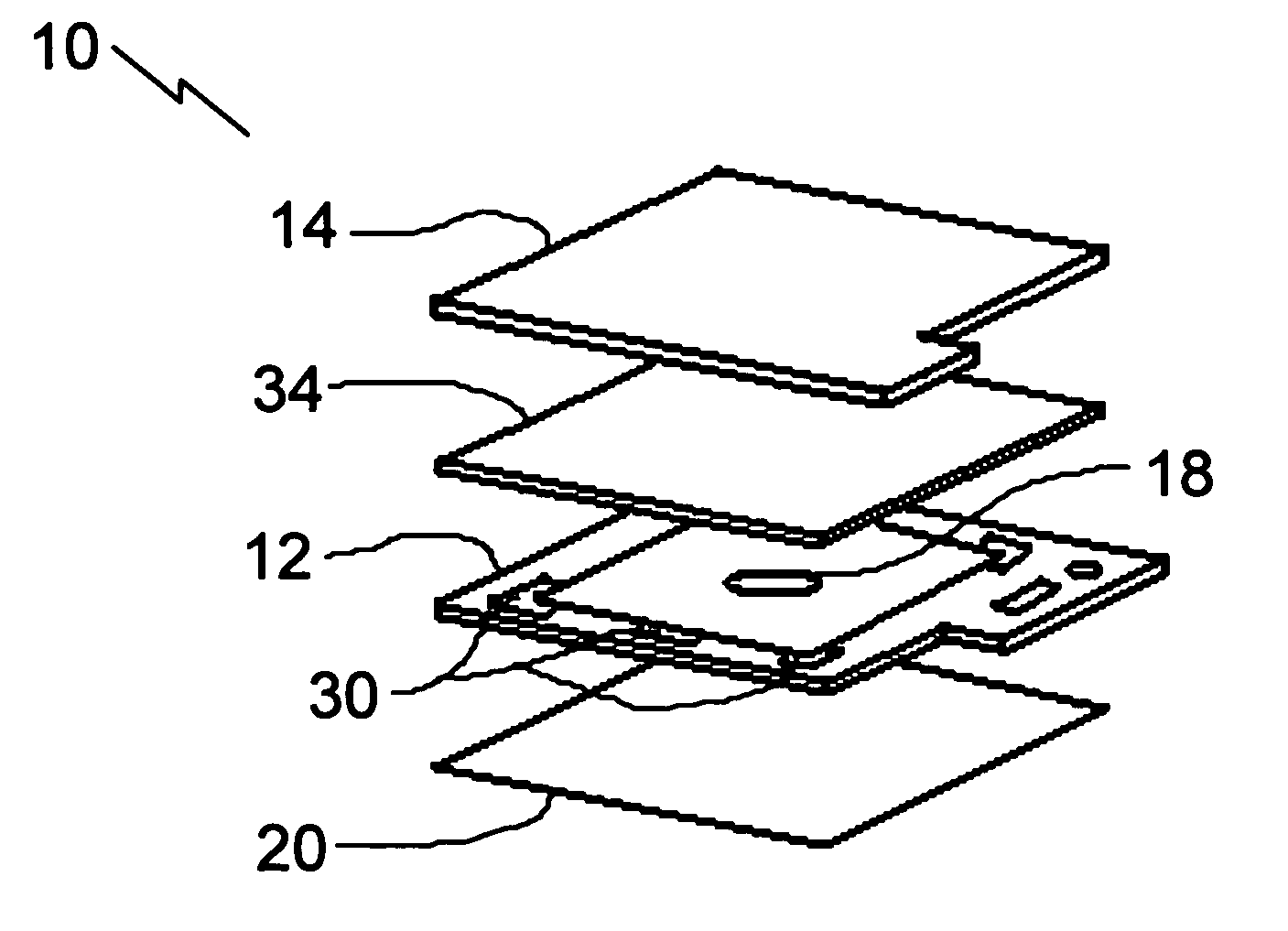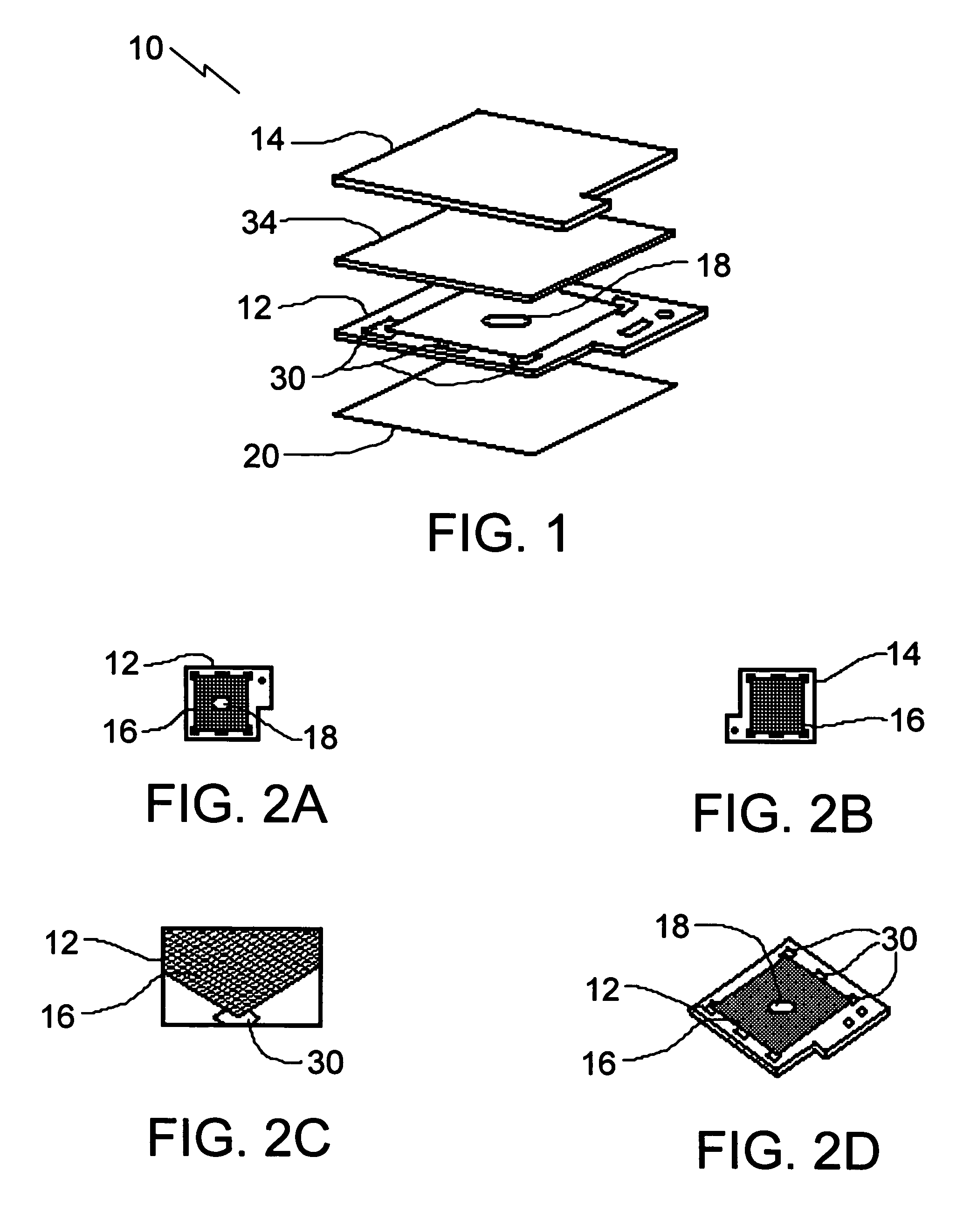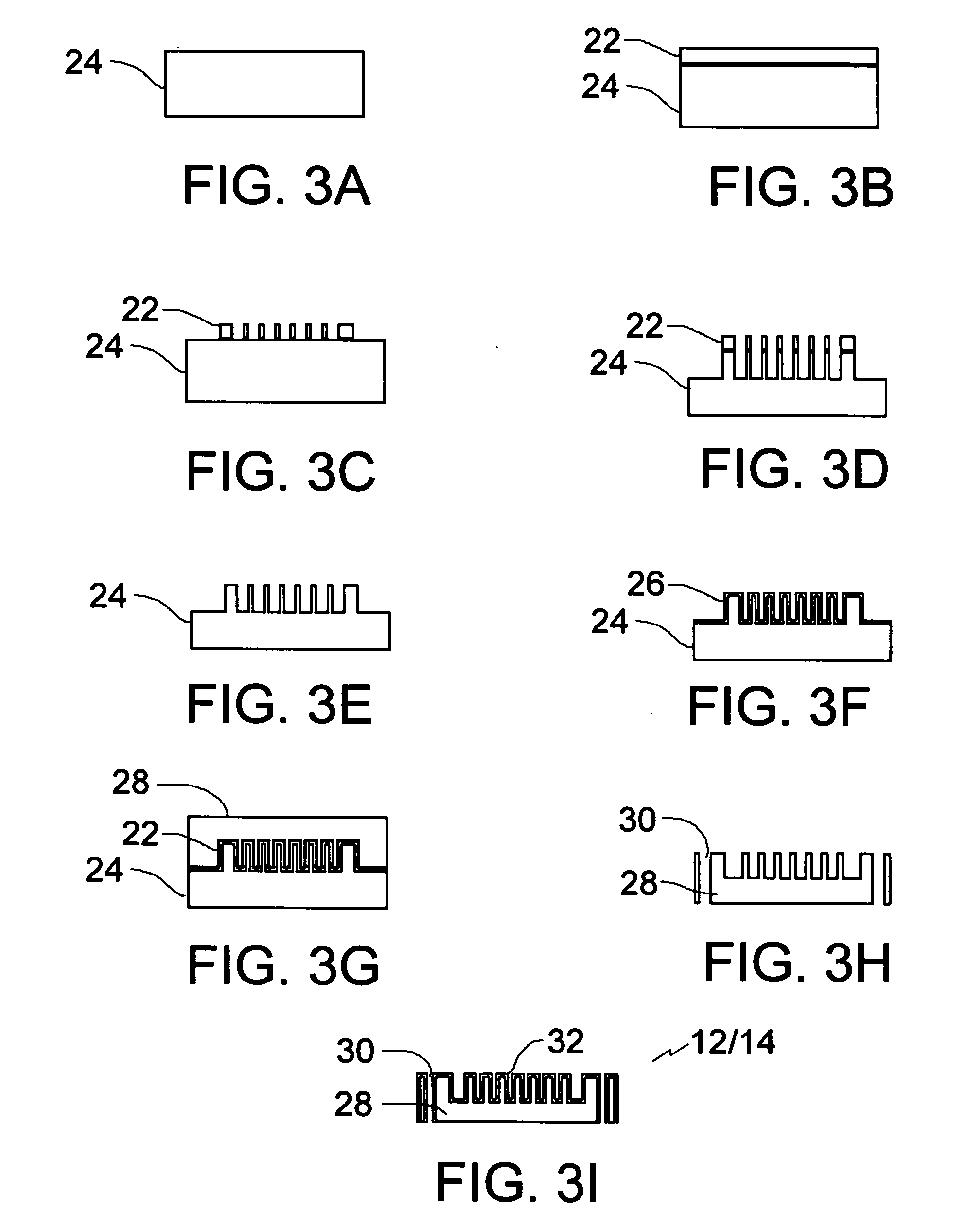Microbial fuel cell with flexible substrate and micro-pillar structure
a fuel cell and micro-pillar technology, applied in the field of new structure of microbial fuel cells, can solve the problems of large achieve the effects of reducing damage to the human body, increasing power output, and reducing the size of conventional lithium batteries
- Summary
- Abstract
- Description
- Claims
- Application Information
AI Technical Summary
Benefits of technology
Problems solved by technology
Method used
Image
Examples
Embodiment Construction
[0017] The preferred embodiment, a microbial fuel cell generally identified by reference numeral 10, will now be described with reference to FIG. 1 through 6.
[0018]FIG. 1 shows an exploded view of the proposed fuel cell 10. Bio-compatible polymeric materials, such as Polydimethylsiloxane (PDMS) is coated with a thin-film gold electrode and is used as the anode 12 and cathode 14. Based on the morphology of target implantation sites, the PDMS anode 12 and cathode 14 can be fabricated to form a specific geometry, thus can minimize damage to the body during implantation. Other bio-compatible polymeric materials can also be used. For example, polylactide-co-glycolide (PLGA) and polycarbonates are suitable for this application. Furthermore, the PDMS 12 / 14 is shaped with a micro-pillar structure 16, as shown for the cathode 12 in FIG. 2A through 2D. Referring to FIG. 6, the micro-pillar structure 16 is a column structure that is typically 10 micrometer×10 micrometer×8 micrometer. Higher a...
PUM
| Property | Measurement | Unit |
|---|---|---|
| physical size | aaaaa | aaaaa |
| height | aaaaa | aaaaa |
| height | aaaaa | aaaaa |
Abstract
Description
Claims
Application Information
 Login to View More
Login to View More - R&D
- Intellectual Property
- Life Sciences
- Materials
- Tech Scout
- Unparalleled Data Quality
- Higher Quality Content
- 60% Fewer Hallucinations
Browse by: Latest US Patents, China's latest patents, Technical Efficacy Thesaurus, Application Domain, Technology Topic, Popular Technical Reports.
© 2025 PatSnap. All rights reserved.Legal|Privacy policy|Modern Slavery Act Transparency Statement|Sitemap|About US| Contact US: help@patsnap.com



